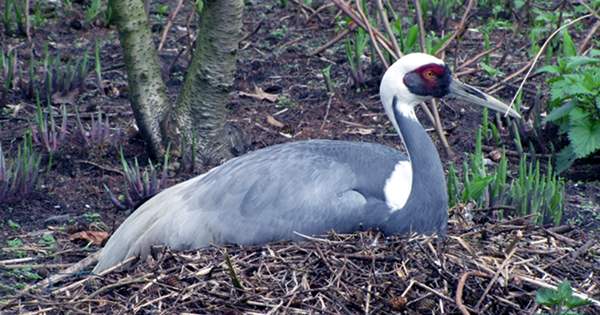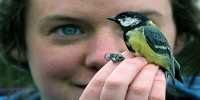Extramarital affairs might thrive in the workplace, but you probably would not expect your partner to discover love at the zoo. That was the case with a man and a crane, as the bird — who accused of murdering two of her previous loves fell beak over feathers for her captor. It is important to note that this is not a story that belongs in the categories of “zoophilia” or “bestiality,” as the crane’s feelings are accepted as a method of preserving the species, but it is unquestionably a love story for the ages.
In 2004, the Smithsonian Conservation Biology Institute in Front Royal, Virginia, purchased Walnut, a white-naped crane (Antigone vipio), to participate in an endangered species breeding program. She was an intriguing candidate for the program because, at the age of 23, she had produced no chicks. When your factor in the possibility that her delayed fatherhood has something to do with her proclivity for killing mates, the prospects for future baby cranes become bleak.
Two males who had tried to win her love said to have been found with their abdomens slashed open, possibly by Walnut’s keen claws. According to Warren Lynch, a zookeeper at the institute, “Walnut had this entire ‘black widow’ thing going on.” As a result, the (no doubt nerve-wracking) chore of persuading walnut to lay eggs fell to the zoo’s newest keeper, a young guy named Chris Crowe.
Walnut, on the other hand, was well worth the wait, as her wild-caught parents (who were unable to return to the wild due to political reasons) meant her genetic diversity would be extremely valuable to a white-naped crane insurance population. Endangered animals bred in this manner to provide a backup in the event that all wild animals become extinct. These captive groups can reintroduce into the wild with the possibility to repopulate their habitat if they have enough genetic diversity.
It decided via a genetic database that Walnut’s genes were a good fit for blending with a bird named Ray, but since he was already pair-bonded with a crane named Abigail (most cranes bond for life), their procreation too facilitated by artificial insemination. As such, worth keeping grappled Walnut to the ground while Crowe injected Ray’s sperm into her cloaca. The stressful ordeal was a success, as Walnut later produced two fertile eggs, which quickly scooped up. Removing them intended to let Walnut and Chris off the hook of incubating them, something that has usually split 50/50 among bird couples.
Crowe noted that Walnut’s demeanor had changed shortly after that. She had started inviting him to a mating dance when he swung by her enclosure. Crowe accepted and returned her head bobbing, even repeating her trumpeting sounds, given that the eventual goal was to “match” her anyway. His singing and dancing were not quite enough, but it was game over when he cracked the crane love code and started delivering her nesting supplies. Crowe was able to inject the sperm with Walnut’s consent, and his procedure resulted in the birth of five chicks. He tasked with working his magic on two other genetically valuable cranes, Amanda and Wucheng, because it was so successful. Crowe’s bond with Walnut has persisted, and despite the fact that he is no longer required for chicks, he continues to dance and “mate” with her to keep her happy.
“I won’t be able to leave if she’s still here when I’m eligible for retirement,” he told the Washington Post. “It would make me feel like a jerk.” Walnut’s odd love story is most likely the result of her being treated badly as a young girl. Birds born in breeding programs today are either placed with their biological parents or fosters of the same species for two reasons: they need to recognize their own species and they need to have a healthy fear of people.
It is possible that if Walnut given too much care as a chick by a well-intentioned volunteer, she imprinted on that person and sought out a human partner when she reached sexual maturity. It would explain why she supposedly sliced the guts of two amorous male cranes and why she is so devoted to her keeper. Crowe’s marital status is unknown at the time of writing, but in a 2018 interview, he described how Walnut’s participation could jeopardize his chances of finding true love. He replied, “Walnut sets the bar very high.” “I’ll never find a woman who is so delighted to see me that she immediately begins dancing.”















